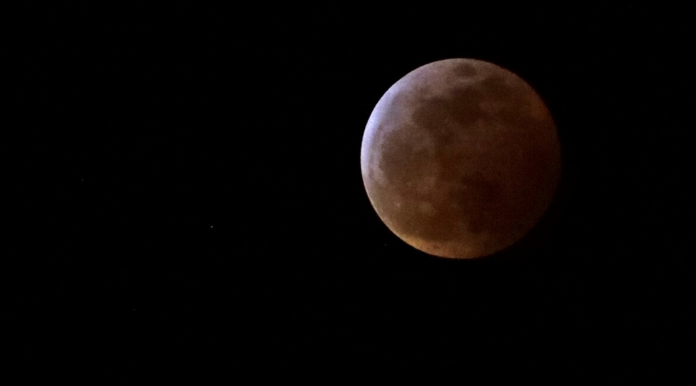We’re in for a treat in the sky over Beaufort SC early Friday when the Micro Beaver Blood Moon turns red as a nearly full lunar eclipse is coming in the wee hours of the morning. Not only will the moon be covered by 97% of Earth’s shadow, it will be the longest partial eclipse in a stretch of some 600 years.
Lunar eclipses occur when the moon is on the opposite side of the Earth as the sun. Usually we see a full moon when this happens, but every so often the moon enters the Earth’s shadow, resulting in an eclipse. This doesn’t happen every full moon because the plane of the moon’s orbit is tilted about 5 degrees from the plane of the Earth’s orbit, and the moon “misses” the shadow of the Earth.
According to Space.com, at maximum eclipse on Friday morning, the moon’s face will be 97% covered by the deepest part of the Earth’s shadow and will probably turn a deep red, the observatory said. November’s full moon is traditional known as the Beaver Moon, as beavers are preparing for winter, hence this month’s event’s Beaver Moon eclipse moniker.
Visibility will be excellent across the Lowcountry, and most of the U.S., and with the long event time you’ll have maximum opportunity to dodge clouds to see the event unfold.
“Partial lunar eclipses might not be quite as spectacular as total lunar eclipses – where the moon is completely covered in Earth’s shadow – but they occur more frequently,” NASA said in a description of the eclipse. “And that just means more opportunities to witness little changes in our solar system that sometimes occur right before our eyes.”
Lunar eclipses are long events. This one will last about six hours and will peak at 4:02 a.m. EST (0902 GMT). The event will be visible from North and South America, Australia, and parts of Europe and Asia.
The eclipse will take place in four main phases, according to NASA. At 1:02 a.m. EST (0602 GMT) the moon will enter the penumbra, or the lighter part of the moon’s shadow. This phase is usually hard to spot without special equipment because the darkening is so slight. The moon will then arrive at the umbra, or the darker part of the shadow, at 2:18 a.m. EST (0718 GMT). Here you will get to enjoy about 3.5 hours of the moon passing through the deep shadow until it exits the umbra at 5:47 a.m. (1047 GMT). The eclipse will end at 6:03 a.m. EST (1203 GMT).
In simpler terms, the lunar eclipse starts around 1:02am, Beaufort SC time, and will end around 7:03am, Beaufort SC time.
Assuming you can see the entire eclipse, the moon will have different appearances at different stages of the event. While it is in the penumbra or lighter part of the Earth’s shadow, it may be difficult for you to see anything at all, especially if you live in a light-polluted region. But as the moon moves closer to the umbra or deep shadow, it will begin to darken, turning a bit greyer than usual.
As the moon approaches the deepest part of the eclipse, the moon will likely turn a dark red or a brown region as it will be 97% eclipsed at the peak. The moon won’t be covered all the way, though, as at the point of greatest eclipse there will still be a region near the bottom of the moon (or top of the moon, if you are viewing through many kinds of telescopes) that is in full sunlight.
Be sure to get out and take a look.










